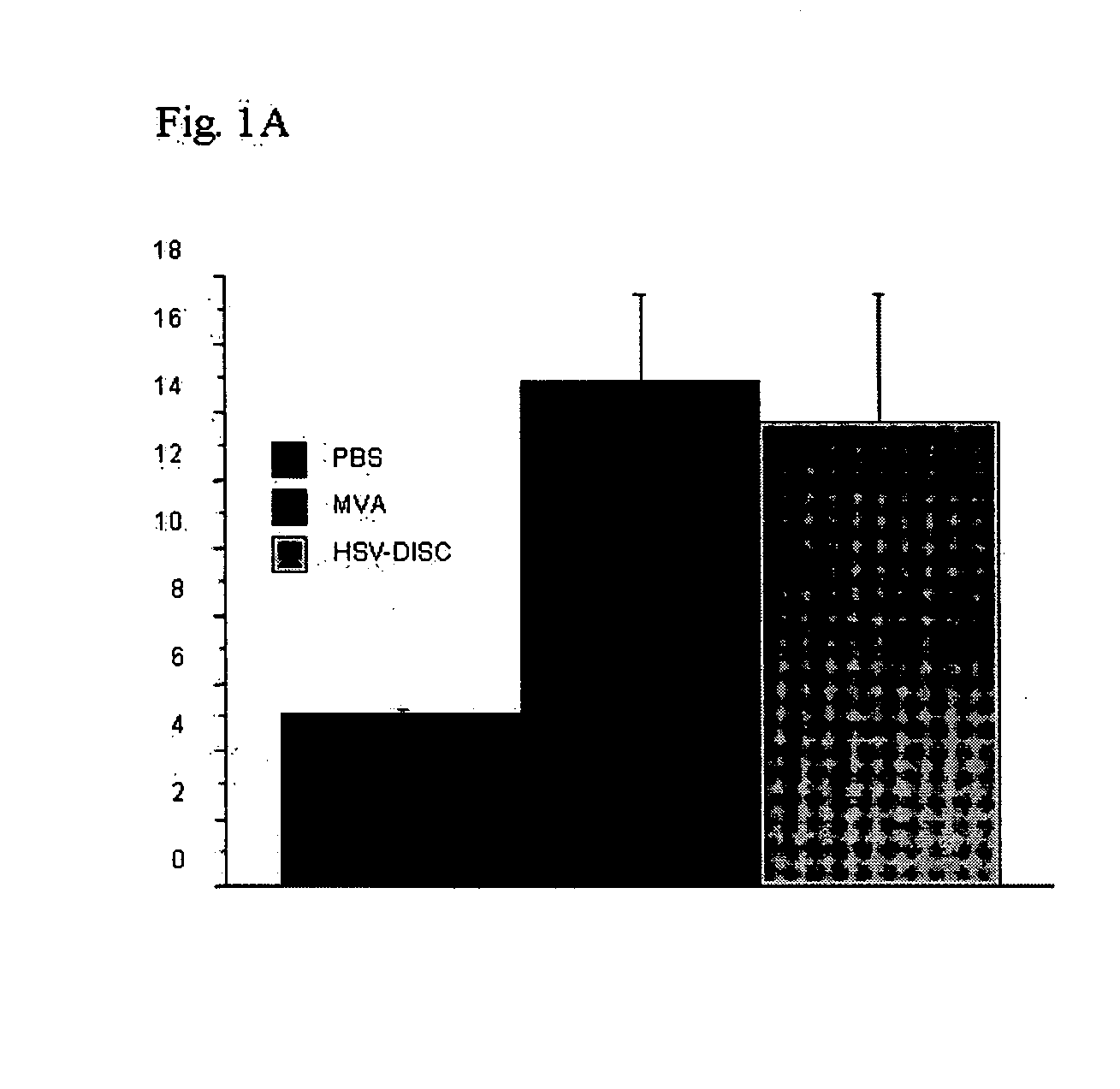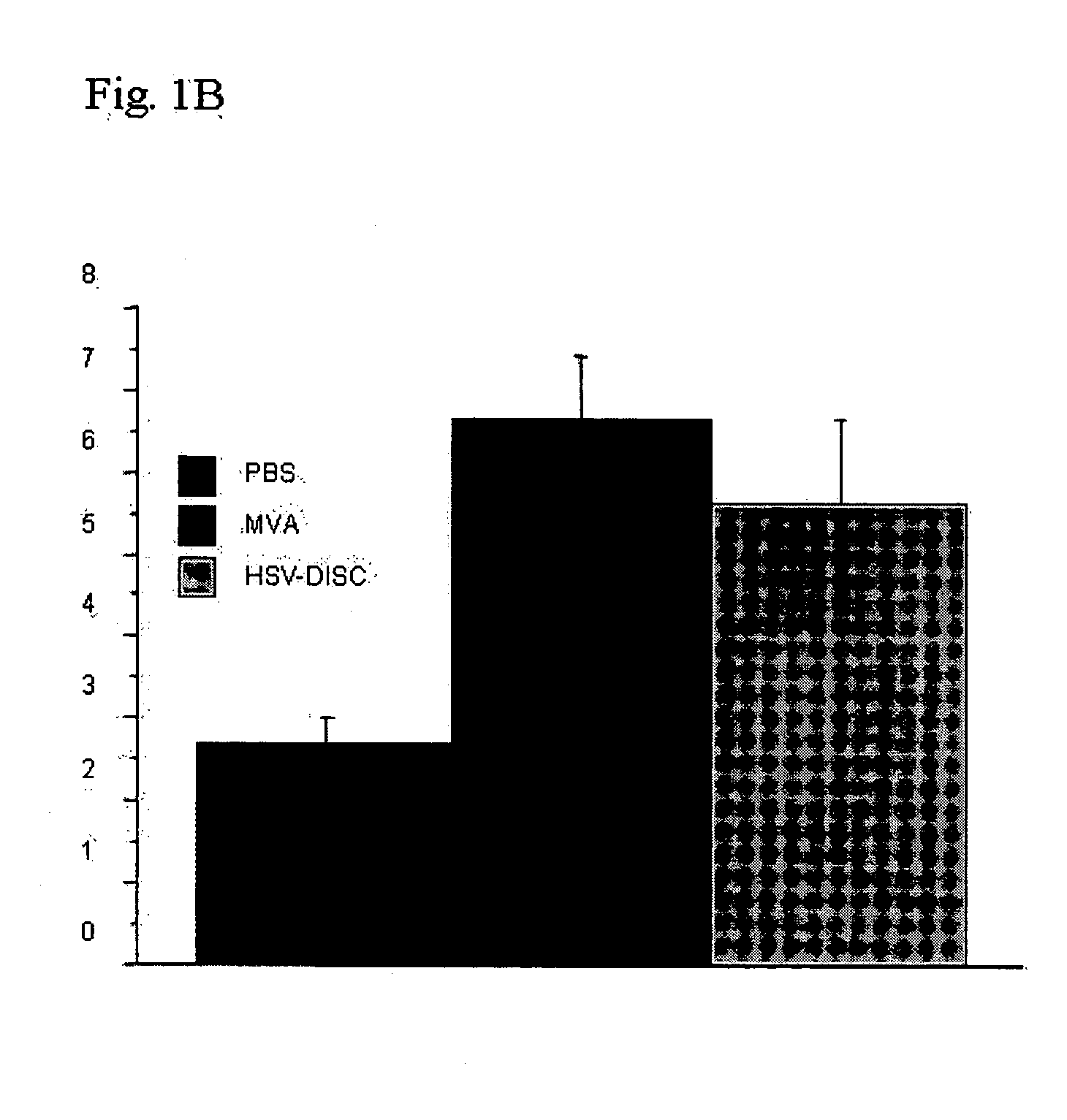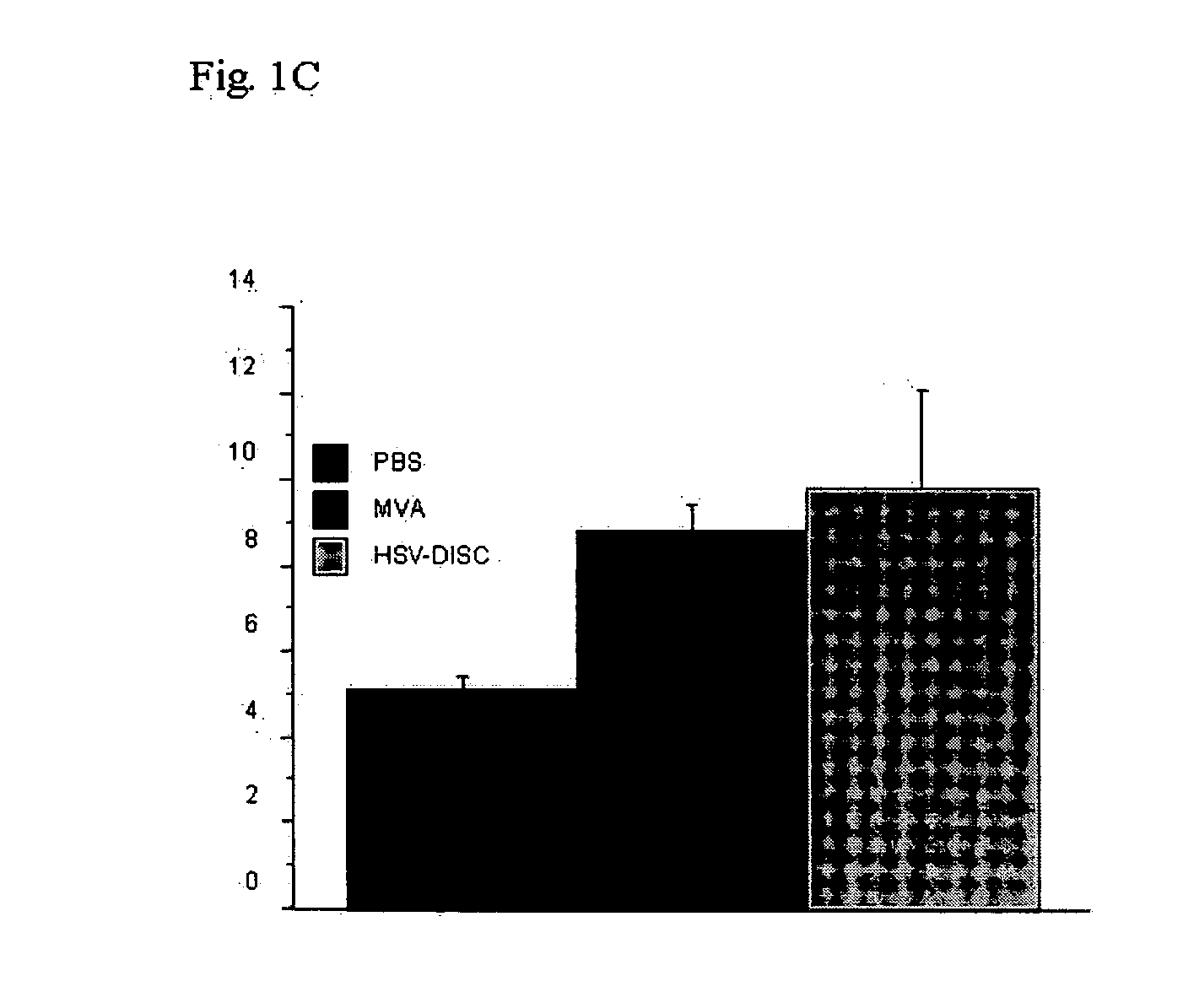Modified vaccinia virus ankara for the vaccination of neonates
a technology of vaccinia virus and neonate, which is applied in the direction of dsdna viruses, immunological disorders, antibody medical ingredients, etc., can solve the problems of hampered attempts to successfully vaccinate newborns, immature immune system may become overwhelmed by virus infection, and host diseases
- Summary
- Abstract
- Description
- Claims
- Application Information
AI Technical Summary
Benefits of technology
Problems solved by technology
Method used
Image
Examples
example 1
(i) MVA-BN and DISC-HSV Induces DC of the CD11c+ and CD8+ Phenotype in Newborn Animals
[0163] First set of experiments: Newborn mice are naturally immunodeficient because the IFN system is not mature. Dendritic cells can be induced in vitro, as well as in vivo, by a variety of stimuli. The number and activation state of DC, the best producers of IFN, is evaluated using flow cytometry. In these studies it was determined whether a controlled MVA-BN replication could induce DC, which is evaluated phenotypically. Groups of mice were injected with 106 plaque forming units (p.f.u.) of MVA-BN or saline within 1-2 days after birth, and in some cases 5 days after birth. Blood and spleen cells from individual mice of both groups were analyzed by FACS and the data compared.
[0164] Data from 7 to 8 individual mice indicate that treatment with MVA-BN increased CD11c+ cells 2-3 fold, accompanied with increased expression of MHC II and increased presence of T cells of the CD4 or CD8 type. Interes...
example 2
MVA-BN Treated Neonatal Mice Survive a Challenge with 100 to 500 LD 50 of HSV-1.
[0175] Groups of mice were treated with the standard dose of MVA-BN one or 2 days after birth and challenged at 7-8 days of age with 100 to 500 LD 50 of Herpes simplex virus 1 (HSV-1) (FIG. 4). MVA BN treated mice survived the challenge with HSV 1, whereas all the control mice died within 5-6 days after inoculating the challenge virus.
[0176] To further support these observations, 9 challenge experiments were performed with 40 MVA BN treated and 45 control mice. More than 80% of the virus treated mice survived the challenge, whereas all the control mice died (FIG. 5).
[0177] In a separate set of experiments the mice were treated at birth with MVA-BN (2.5×106 TCID5O / mouse). At day 8 a challenge with either 103 (1 LD50) or 105 (100 LD50) PFU of HSV-1 was performed. Following MVA-BN vaccination 65% of the mice survived a viral dose that killed 100% of the control mice (100 LD50) and 90% survived a dose th...
example 3
(i) The Long-Term, but not Short-Term, Anti Viral Effect of IFNα / β Depends on FL and pDC.
3.1 Introduction
[0182] Treatment of newborn mice with MVA-BN increases resistance against infection with heterologous Herpes simplex virus type 1 (HSV-1) one week after MVA-BN treatment (see above). The protection is associated with increased levels of FL in serum and increased numbers of pDC.
[0183] In this example, the role of IFNα and FL (Flt-3L) in the defense against HSV-1 in neonatal mice was investigated. The data show that there is a FL-independent, short-term and a FL-dependent, long-term effect of IFNα. During the long-term effect, IFNα induces FL which is able to increase the number of pDC. Although protection against HSV-1 is not solely dependent on pDC, they play an important role in the defense against HSV-1 in neonatal mice.
3.2 Results
3.2.1 The Short-Term Protection Induced by rIFNα is FL-Independent
[0184] As previously shown (Vollstedt, 2003, J. Exp. Med. 197:575), rIFNα...
PUM
| Property | Measurement | Unit |
|---|---|---|
| time | aaaaa | aaaaa |
| time | aaaaa | aaaaa |
| time | aaaaa | aaaaa |
Abstract
Description
Claims
Application Information
 Login to View More
Login to View More - R&D
- Intellectual Property
- Life Sciences
- Materials
- Tech Scout
- Unparalleled Data Quality
- Higher Quality Content
- 60% Fewer Hallucinations
Browse by: Latest US Patents, China's latest patents, Technical Efficacy Thesaurus, Application Domain, Technology Topic, Popular Technical Reports.
© 2025 PatSnap. All rights reserved.Legal|Privacy policy|Modern Slavery Act Transparency Statement|Sitemap|About US| Contact US: help@patsnap.com



